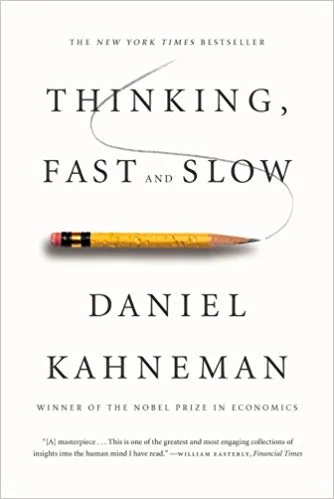ANDREW HALLAM
It was easy to buy jeans when I was in high school in the late 1980s. I liked Levi’s 501s. They had a button fly and, as long as I picked the right size, I was good to go.
It’s a lot different now.
When I shop for jeans today, I often leave the stores empty-handed. There are too many choices including skinny, slim, straight, relaxed and tapered.
Psychologist Barry Schwartz understands my frustration. In his 2004 book The Paradox of Choice, Mr. Schwartz argued people who are offered too many choices become less satisfied. Instead of feeling freedom of choice, they can feel paralyzed by it.
It’s the same with investing. Exchange-traded funds (ETFs) are launching like fireworks in July. There were 848 ETFs offered by 38 providers with a total value of $183.7-billion as of July 31, according to National Bank of Canada’s ETF Research Group. That’s up from 720 ETFs from 28 providers with a value of $160-billion from a year earlier. This is just in Canada.
Most people want to invest in low-cost ETFs, but are overwhelmed by choice. Let me suggest a solution. Consider buying an all-in-one portfolio ETF that offers broad diversification including Canadian, U.S., international stocks and bonds.
It’s not just easy, but potentially more profitable that picking a bunch of individual ETFs that offer similar market coverage. Why? Many investors speculate. They buy a particular ETF, only to trade it for another one they believe will do better. Some investors try to make tactical choices by tweaking their portfolio allocations based on economic or political news. It might sound like a smart strategy, but it usually hurts their returns.
Don’t just take my word for it. Fund rating company Morningstar publishes performances for U.S.-based mutual funds and index funds. It also shows how investors perform in those same funds. If people were rational, the results would be the same. Unfortunately, they aren’t.
For example, according to Morningstar, Vanguard’s S&P 500 Index (VFINX) averaged a compound annual return of 8.6 per cent for the 15 years ending June 30. Yet, the typical investor in this fund averaged just 6.3 per cent. In other words, plenty of investors bought high and sold low. It was the same story with investors in most individual funds tracked by Morningstar. They behaved poorly, and it cost them plenty.
Morningstar doesn’t publish similar results for Canadian ETFs, but it’s likely the behavioural performance gaps are just as wide.
How investors performed compared to the funds they owned
(June 30, 2004 - June 30, 2019)
It was different for Americans who picked all-in-one funds. In 2018, Morningstar’s Jeffrey Ptak published an article titled, “Success Story: Target Date Fund Investors,” in which he says most people who buy all-in-one funds behave much better than those who pick individual funds.
The past 15 years offer a good measuring stick for investors’ behaviour because it included both rising and falling markets. Vanguard has several all-in-one target retirement funds with 15-year track records. These are popular among employee-sponsored retirement plans in the U.S. As a result, many investors bought these funds on autopilot. They didn’t speculate. They knew they were diversified and simply added the same amount of money every month, also known as dollar-cost averaging.
In doing this, their monthly contributions bought fewer fund units when their prices were high, and a greater number of units when the prices were low. It meant these investors paid a lower-than-average price, which helped them beat the posted performances of their funds.
An example is with Vanguard’s all-in-one Target Retirement 2045 fund, which averaged 7.4 per cent annually over the 15-year period ending June 30. According to Morningstar, investors in the fund averaged just under 8.1 per cent per year.
Investors in all-in-one funds won’t always beat the posted performances of their funds. That’s not important. What’s more important is that these investors speculate less. They appear to stick to a plan. They allow the fund company to rebalance its funds and maintain a constant allocation. Consequently, such investors will likely beat most people who pick individual ETFs.
Investors in all-in-one funds appear to behave better
(June 30, 2004 - June 30, 2019)
Many firms offer all-in-one portfolio ETFs, such as Vanguard, BMO, iShares and Horizons. But don’t be stymied by choice. Without splitting hairs, they’re all diversified and charge similar fees. If in doubt, select your risk tolerance and then draw straws. Selecting one firm’s product over another won’t make or break your retirement.
Here’s some guidance to get started:
Conservative investors might like BMO’s Conservative ETF (ZCON) or Vanguard’s Conservative ETF Portfolio (VCNS), each invests about 60 per cent in bonds and 40 per cent in Canadian and global stocks.
Those who want a bit more growth could buy BMO’s Balanced ETF (ZBAL), iShares Core Balanced ETF Portfolio (XBAL) or Vanguard’s Balanced ETF Portfolio (VBAL). Each fund includes 40 per cent in bonds and 60 per cent in Canadian and global stocks.
Investors with a higher tolerance for risk might prefer BMO’s Growth ETF (ZGRO) iShares Core Growth ETF Portfolio (XGRO) or Vanguard’s Growth ETF Portfolio (VGRO). They each contain about 20 per cent in bonds and 80 per cent in Canadian and global stocks. Horizons’ all-in-one ETFs have similar allocations.
Still overwhelmed? Don’t sweat the small stuff. Look at it like batches of organic vegetables grown on different farms: If you’re thinking long-term, they’re all healthy products. Select an all-in-one fund based on your tolerance for risk and then add money every month until you retire. You’ll beat the paradox of choice and your long-term results should speak for themselves.
